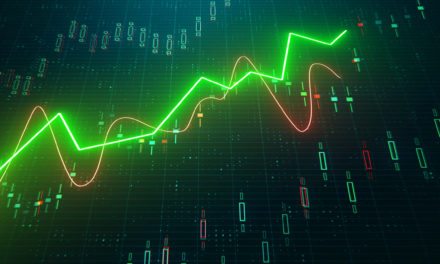
“I buy on the assumption that they could close the market the next day and not reopen it for five years.”
— Warren Buffett
Investors can learn a lot from Warren Buffett, whose above quote teaches the importance of thinking about investment time horizon, and asking ourselves before buying any given stock: can we envision holding onto it for years — even a five year holding period possibly?
Suppose a “buy-and-hold” investor was considering an investment into Goldman Sachs Group Inc (NYSE: GS) back in 2017: back then, such an investor may have been pondering this very same question. Had they answered “yes” to a full five year investment time horizon and then actually held for these past 5 years, here’s how that investment would have turned out.
| Start date: | 06/06/2017 |
|
|||
| End date: | 06/03/2022 | ||||
| Start price/share: | $214.53 | ||||
| End price/share: | $318.68 | ||||
| Starting shares: | 46.61 | ||||
| Ending shares: | 51.21 | ||||
| Dividends reinvested/share: | $24.30 | ||||
| Total return: | 63.19% | ||||
| Average annual return: | 10.30% | ||||
| Starting investment: | $10,000.00 | ||||
| Ending investment: | $16,317.15 | ||||
As we can see, the five year investment result worked out quite well, with an annualized rate of return of 10.30%. This would have turned a $10K investment made 5 years ago into $16,317.15 today (as of 06/03/2022). On a total return basis, that’s a result of 63.19% (something to think about: how might GS shares perform over the next 5 years?). [These numbers were computed with the Dividend Channel DRIP Returns Calculator.]
Many investors out there refuse to own any stock that lacks a dividend; in the case of Goldman Sachs Group Inc, investors have received $24.30/share in dividends these past 5 years examined in the exercise above. This means total return was driven not just by share price, but also by the dividends received (and what the investor did with those dividends). For this exercise, what we’ve done with the dividends is to assume they are reinvestted — i.e. used to purchase additional shares (the calculations use closing price on ex-date).
Based upon the most recent annualized dividend rate of 8/share, we calculate that GS has a current yield of approximately 2.51%. Another interesting datapoint we can examine is ‘yield on cost’ — in other words, we can express the current annualized dividend of 8 against the original $214.53/share purchase price. This works out to a yield on cost of 1.17%.
Another great investment quote to think about:
“The person who starts simply with the idea of getting rich won’t succeed; you must have a larger ambition.” — John Rockefeller




